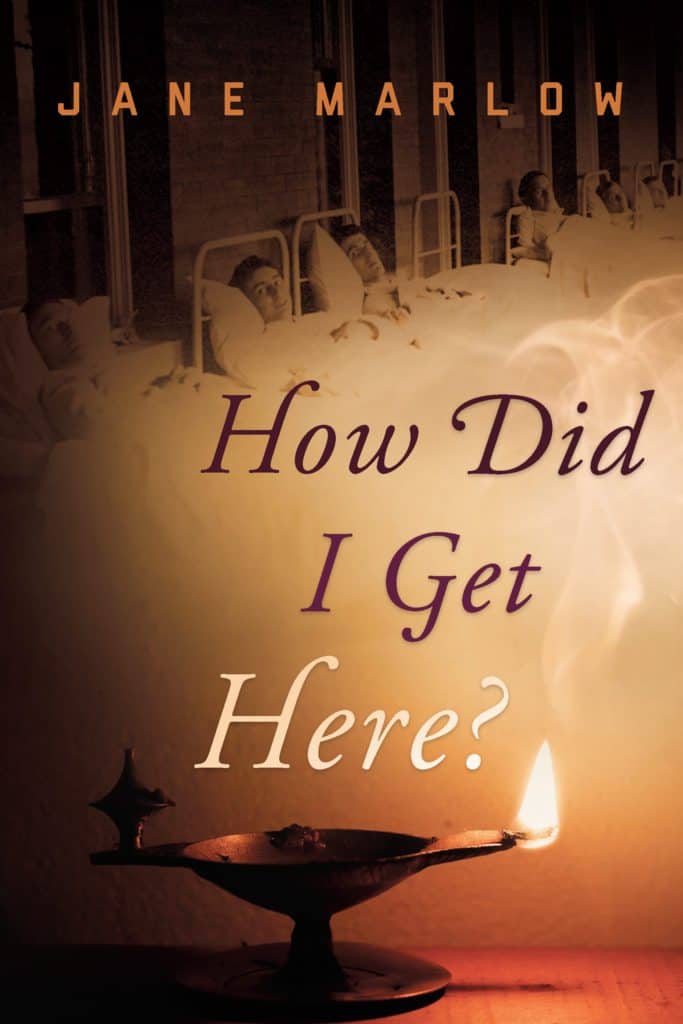When Russia blunders into the misbegotten Crimean War in 1854, medical student Andrey Rozhdestvensky grabs at what he believes to be free passage out of his vapid life. Volunteering as a surgeon for the Russian army, Andrey travels to the frontlines, where he discovers the atrocities of war, and fights to keep death and disease from decimating the troops. As the war progresses, Andrey fears his mind is becoming unhinged as he witnesses the most senseless disregard for human life imaginable. Even after the ink dries on the peace treaty, the madness of the war doesn’t end for Andrey. Emotionally hamstrung, he scours city and countryside in search of a place where his soul can heal.
A war story told in intimate human terms, How Did I Get Here? is the result of Jane Marlow’s lifelong interest in 1800s Russia and extensive research into the Crimean War. The second book in the Petrovo series, this novel follows Who Is To Blame? A Russian Riddle, reacquainting readers with several of their favorite characters.
I had a chance to interview her to learn more.
Jane Marlow was 11 years old when her mother hauled her to a stage performance of “Fiddler on the Roof”—a night that began her lifelong fascination with the grayness and grandeur of 19th century Russia. After a 30-year career as a veterinarian, Jane began writing full-time. She spent years researching 1800s Russia, the setting for her first two novels, Who Is to Blame? and How Did I Get Here?, books 1 and 2 in the Petrovo series. Jane holds a Master’s Degree in Public Health from Texas A&M University, and her Doctor of Veterinary Medicine from the University of Illinois. A longtime resident of the Austin, Texas area, she now lives in Bozeman, Montana.
1. What was the inspiration for the book?
While I was conducting research for Who Is to Blame, my first novel in the Petrovo series, I kept bumping into this thing called the Crimean War (1853-1856) in which Russia was pitted against England and France. Eventually, I realized it would have to become the backdrop of my second novel, for two reasons.
First, the Crimean War was proverbial guinea pig for a myriad of innovations. In fact, it’s often described as the first of the modern wars, setting the stage for not only the US Civil War, but also the two 20th-century World Wars.
First, the Crimean War was proverbial guinea pig for a myriad of innovations. In fact, it’s often described as the first of the modern wars, setting the stage for not only the US Civil War, but also the two 20th-century World Wars.
|
nurses
|
railroads
|
coverage by reporters, illustrators, and cameramen
|
|
field hospitals
|
steamships
|
Minié rifles, rendering black powder muskets obsolete
|
|
surgical anesthesia
|
telegraphs
|
casts in lieu of limb amputation for broken bones
|
|
triage of the wounded
|
trench warfare
|
|
The second factor that grabbed my attention and wouldn’t let go was the war’s grand scale of maladministration that took place on both sides of this tragically botched military campaign. The result was hideous carnage on the battlefield and an even greater number of fatalities due to disease, malnutrition, and winter exposure. Not until World War I would more people die as victims of war.
In his book The Legacy of the Crimean War, anthropologist Robert Edgerton sums up the War with this statement: Perhaps the most fundamental lesson to be learned from a look back at the Crimean War is how easy it is for nations to blunder into wars that serve no purpose or cannot be won.
2. Was there anything that surprised you as you were doing your research for the book?
What a shock to learn that although acclaimed Russian novelist Leo Tolstoy was a staunch moralist later in life, he started out as a bit of a bad boy. In November 1854, 26-year-old Tolstoy arrived at the military front as a junior officer in an artillery brigade. During his ten months of duty, his fellow officers described him as stubborn, arrogant, a party animal, a womanizer, and an observer of people. He played cards. A lot. And he couldn’t shake his gambling habit. One game lasted 2 days and 3 nights and had catastrophic results – Tolstoy lost the house on his family’s estate of Yasnaya Polyana, the very house in which he had been born. A decade later, Tolstoy would draw heavily on his Crimean experiences while writing what would become his magnum opus, War & Peace.
3. What impact did the Crimean War have on US history?
Strange as it may sound, if it weren’t for the Crimean War, Texas would have the status of being the largest state in the U.S.
In the mid-1800s, Alaska was a possession of Russia and a lucrative center of international trade. Despite the outpost’s prosperity, Russia was eager to unload its Alaskan territories to offset its debts following the disastrous Crimean War.
The United States, which had been chummy with Russia during the Crimean War, was drooling to acquire the territory. In 1867, US Secretary of State William Seward inked a deal to purchase Alaska for the bargain-basement price of $7.2 million (two cents an acre). The transaction proved to be a remarkable investment for the US. A mere 50 years after the deal was consummated, Americans had earned the purchase price back 100 times over. The territory became the 49th state in 1959.


No comments:
Post a Comment